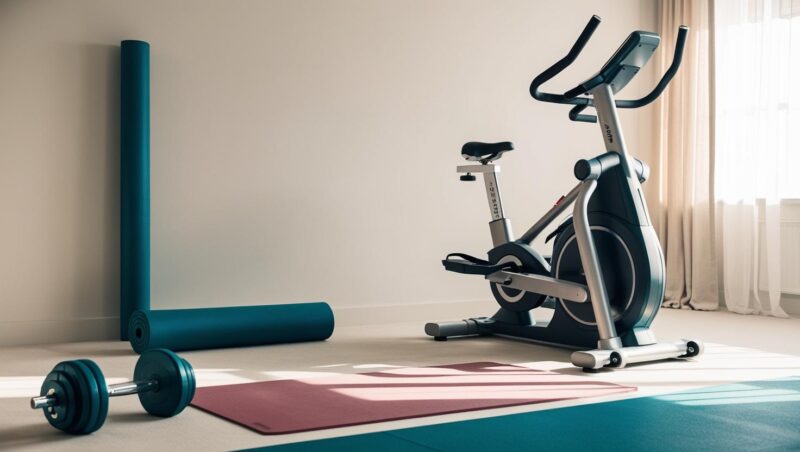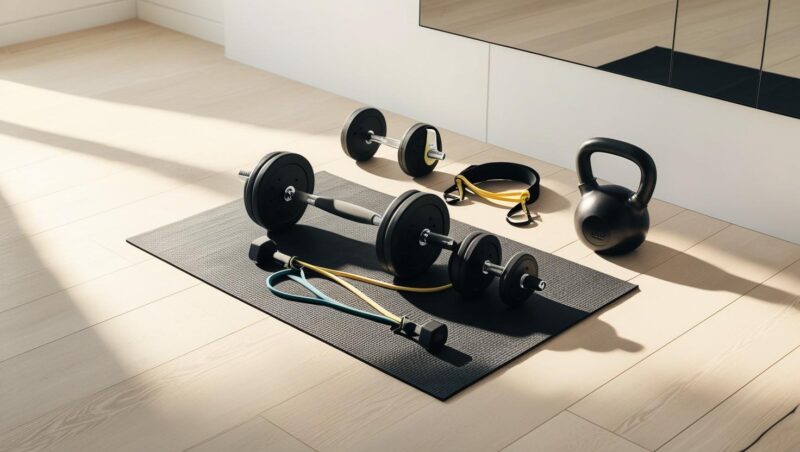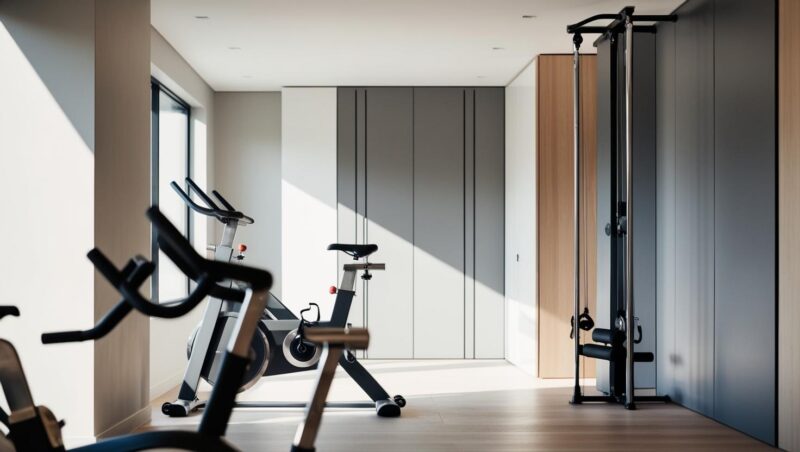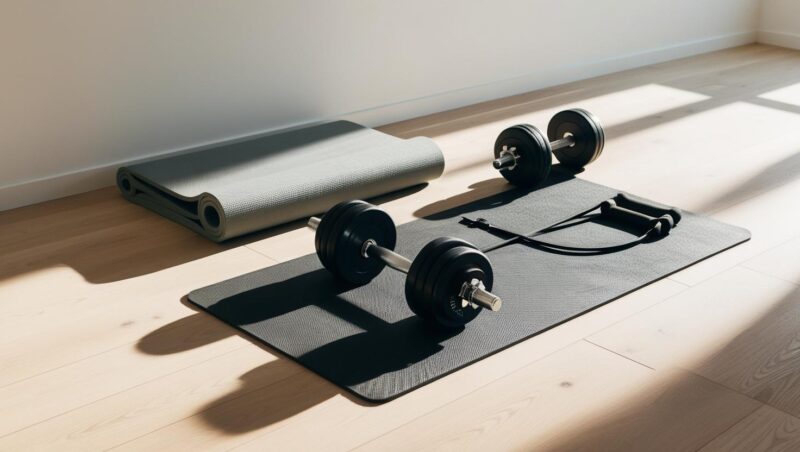
Share Post:
Balancing a packed schedule with regular workouts often feels like chasing unicorns. Tasks pile up, distractions never end, and many people conclude there’s no wiggle room for exercise.
That assumption is nonsense. With direct focus and a few blunt strategies, anybody can carve out space for movement. In other words, the problem isn’t lack of time—it’s a refusal to place fitness high enough on the daily priority list.
Let’s cut straight to the chase and explore effective ways to create an exercise routine when life is frantic.
Table of Contents
Toggle1. Look at Immediate Benefits

People love to say, “Exercise is essential for future health.” That’s true, but focusing on how movement aids right now is often more effective.
Some quick wins:
- More stable energy levels throughout the day
- Reduced tension and agitation
- Greater sense of alertness, which can lead to better work performance
- Who doesn’t appreciate a calmer mind and more balanced emotions? By giving more attention to these quick improvements, it’s easier to feel motivated and stick to a plan.
2. Treat It Like a Non-Negotiable Appointment
Many individuals refuse to cancel a scheduled meeting with a boss or skip a doctor’s visit. So why treat training sessions with less respect? Put exercise on the calendar, set reminders on your phone, or scribble it in your planner.
Pretend it’s an appointment that can’t be missed under any circumstance. Blocking out time in the morning or early evening can reinforce discipline. Soon enough, picking up dumbbells at 7 AM will feel as natural as brushing teeth.
Engaging a personal trainer can also help you treat workouts as essential appointments and be more disciplined.
Practical Tips
3. Capitalize on Short, High-Intensity Sessions
Some folks hear the word “workout” and assume it means a sweaty two-hour ordeal. High-Intensity Interval Training (HIIT) crushes that myth.
Even 10 or 15 minutes of sprints, fast-paced bodyweight exercises, or jump rope intervals can blast calories and ramp up cardiovascular fitness.
Short sessions fit into tight schedules and can be completed on a lunch break or in a spare corner of the day.
Ideas for Quick Routines
- 10-minute cycle of 30 seconds sprinting followed by 30 seconds walking
- 15 minutes of alternating squats, push-ups, and burpees
- Quick boxing drills with a jump rope warm-up
- Even if there’s only a small window of opportunity, that burst of activity can spark a surge of energy and help keep stress in check.
4. Turn the Commute into a Movement

Heard the endless complaint: “I have a lengthy commute, so I can’t work out.” That story is old. For those living close to the office, walking or biking adds a healthy dose of cardio to the day.
Fresh air en route to the desk often leads to improved focus once you’re seated and ready to tackle work duties.
5. Lean on Apps and Tech Tools
The smartphone can be a time-waster, but it can also be the golden ticket to better fitness. Countless apps supply brief workouts, track progress, and provide motivational nudges.
Some people do well with a structured program laid out by an app that eliminates the need to plan routines from scratch.
Plus, seeing graphs of improvements in strength or endurance can keep the momentum alive, especially on days when motivation dips.
Popular App Features
- Progress-tracking with clear visuals
- Timed intervals for HIIT workouts
- Reminders and notifications that ping when it’s time to move
- Customized plans based on specific goals
- Those who prefer wearable gadgets can track steps, monitor heart rate, and gamify their workout journey.
Smartwatches and fitness bands offer reminders to stand up, walk a bit, or take a minute to breathe deeply. Don’t underestimate the power of little notifications that urge movement throughout the day.
6. Fit Physical Activity into Everyday Tasks
Some call it multitasking; others call it being clever. A phone call doesn’t require sitting in a chair. Pace the office or walk outside. Catching up on a favorite TV show? Incorporate lunges or squats during commercials.
Simple, low-intensity exercises can be sprinkled into mundane tasks, turning pockets of time into an opportunity to stay active.
Ideas to Maximize Movement
- Do calf raises while brushing teeth
- Perform planks during short breaks
- Tidy up the house in a more vigorous manner (turn it into a mini-cardio session)
- Take the stairs instead of the elevator every chance possible
7. Choose Full-Body Workouts
For anyone juggling endless responsibilities, a training regimen that hits multiple muscle groups is pure gold. Squats, lunges, push-ups, and planks require minimal equipment but work several areas at once.
That means more benefits in less time. There’s no need to isolate every muscle. Aim for compound movements that challenge the core, upper body, and lower body in a single session.
Quick Exercises with Major Impact
Efficiency is the name of the game. No reason to overcomplicate the routine by splitting workout days for different body parts if time is scarce.
8. Remain Flexible and Adaptable
Life throws curveballs nonstop. A child falls sick, the boss calls an emergency meeting, or a long-lost friend drops by unexpectedly. The best approach is to stay open to quick adjustments.
A schedule that’s carved in stone often ends in frustration when things change. A broad framework that allows shifting workout windows keeps you consistent over the long haul.
9. Go Social for Extra Accountability

Some people perform better when they’re part of a group or class. There’s an extra boost of motivation if a friend or group is involved. It’s tough to skip an exercise session when a buddy is already waiting with a yoga mat or a pair of running shoes.
Group fitness classes can also ease boredom because variety is built in, and the social aspect makes it feel more like an outing than a chore.
Benefits of Group Activities
- Friendly competition that pushes everyone to try harder
- A network of people who share tips and experiences
- The chance to bond over common goals (and common sweat)
- Increased accountability from having others expect your presence
10. Give Yourself Proper Rest
Pushing through exhaustion only leads to burnout or injuries. Neither helps a busy person maintain a regular schedule. Quality sleep and designated rest days help the body recover, repair muscles, and recharge mentally.
An overworked system eventually rebels, resulting in lackluster workouts or total abandonment of the plan.
Sleep hygiene matters:
- Aim for a consistent bedtime whenever possible
- Keep screens away from the pillow to reduce pre-sleep stimulation
- Plan rest days instead of letting them happen by accident
- Hydration and balanced nutrition contribute to faster recovery
- A well-rested body is more likely to enjoy a workout, rather than dreading it.
Intrinsic Motivation
Plenty of people jump on the treadmill for future rewards, such as dropping two pants sizes or preparing for an event. Those aims can work, but they often lose steam when life’s pace picks up.
Emphasizing immediate gratification—like boosting daily energy or feeling proud for hitting a personal milestone—seems to lock in consistency.
Truly grasping what sparks enthusiasm can make a massive difference. Some folks thrive on competition (personal bests, group challenges). Others flourish under the guidance of a coach or training buddy.
A few enjoy alone time to clear the mind, so a solitary jog or yoga routine fits perfectly. Honoring whatever makes exercise enjoyable—right now—can be a turning point.
Real Talk on Priorities
Life doesn’t magically create more hours in a day. It’s about choosing to rearrange and commit. Nobody wants to hear that when they’re exhausted, but ignoring it won’t make life any less hectic.
Some Areas to Re-examine
- How many minutes (or hours) are spent mindlessly scrolling each day?
- Are there tasks that can be delegated, freeing a bit of space for a quick session?
- Is there an opportunity to combine social life with physical activity, like meeting a friend for a jog instead of a coffee?
- Recognizing everyday time-wasters can reveal an obvious solution. It’s not glamorous, but it’s powerful.
Make It Sustainable
A new habit that feels miserable won’t last. Doing something that feels impossible day after day sets the stage for quitting. A better approach is finding methods of movement that are both challenging and realistic.
Maybe it’s weightlifting at home with minimal equipment. Perhaps it’s a spinning class once a week combined with a brisk walk on weekends. The goal is continuity over the long term, not a grand gesture that fizzles out in a week.
Tips for Building Momentum
Closing Thoughts
Exercise doesn’t have to be an epic odyssey. It can fit into a daily routine if chosen deliberately. Even brief sessions add up when repeated consistently. The trick is to hold yourself accountable, stay flexible, and remember the immediate perks that make each workout worthwhile. Move often, rest enough, and watch how a hectic lifestyle starts feeling more manageable.
A busy life should never be an excuse to neglect health. A little creativity and a firm decision to prioritize workouts can produce remarkable results. So stop wasting time, block out a few minutes on the calendar, and get moving.
Energy levels will rise, stress will drop, and the day’s chaos might feel a little less overwhelming when the body is in motion. That’s the straightforward reality: make space for fitness, and life gets better—one quick sweat session at a time.
Related Posts:
- What Fit People Eat on the Go? Quick and Healthy…
- How Working Moms Can Squeeze in Workouts During a Busy Day
- 13 Common Mistakes People Make After Joining the Gym
- Is It Time to Expand Your Gym? Signs You’re Ready to Grow
- Short on Time? Try This Killer 5-Minute Ab Workout
- Can You Improve Your Reaction Time? The Techniques…









